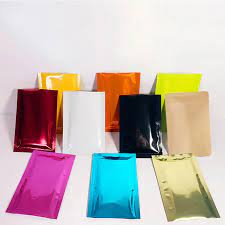Ziplock bags are versatile, hassle-free, and all-pervasive in families and sectors around the world. From holding meals to arranging little things, these resealable plastic-type material bags provide countless uses. Here’s all you have to learn about ziplock bag (ถุงซิปล็อค).
1. Beginnings and Design and style: Ziplock bags (ถุงซิปล็อค) were actually invented by Borge Madsen within the late 1950s. Originally made from polyethylene, they have a unique interlocking closing system, comprising two plastic-type material strips with interlocking lines that close the bag when pressed jointly.
2. Adaptability: Ziplock bags may be found in various sizes, styles, and thicknesses to accommodate different needs. They may be frequently used for meals storing, journey business, and wrapping goods including expensive jewelry, electronic devices, and makeup products. Furthermore, they usually are utilized in healthcare adjustments for specimen travel and storage because of the airtight close off.
3. Advantages: The main benefit of ziplock bags could be the resealable the outdoors, that enables for simple entry and continuous freshness. They are also tough, reusable, and transparent, allowing users to identify materials easily. Additionally, these are inexpensive and readily available, leading them to be a standard in homeowners and companies.
4. Ecological Considerations: Whilst ziplock bags offer you ease, their disposable nature boosts environment issues. Most ziplock bags are made of non-biodegradable components, bringing about plastic toxins. Nevertheless, some businesses produce bio-degradable and compostable choices, mitigating their enviromentally friendly influence.
5. Proper Consumption: To increase the strength of ziplock bags, suitable use is essential. Guarantee the materials are dried up and clear of razor-sharp things which could puncture the bag. When securing, click over the closing to take out unwanted atmosphere and make a tight seal. Moreover, brand bags with contents and schedules for easy identification and rotation.
6. Cleaning up and Upkeep: Ziplock bags might be rinsed and recycled several times, reducing squander. Rinse all of them with comfortable, soap and water, wash carefully, and oxygen dried up before reuse. Stay away from severe substances or subjecting them to high temps, since this can degrade the plastic-type and affect the close off.
7. Protection Considerations: Whilst ziplock bags are often secure for meals storage, it’s vital to utilize them suitably. Steer clear of microwaving or freezing food products in non-foods level bags, since this can release damaging chemical compounds in to the foods. Furthermore, generally discard bags with visible signs and symptoms of injury or put on to avoid contaminants.
In summary, ziplock bags are functional, practical, and popular for various uses. By knowing their beginnings, benefits, correct usage, and ecological influence, end users can make informed choices to increase their energy although reducing spend.
